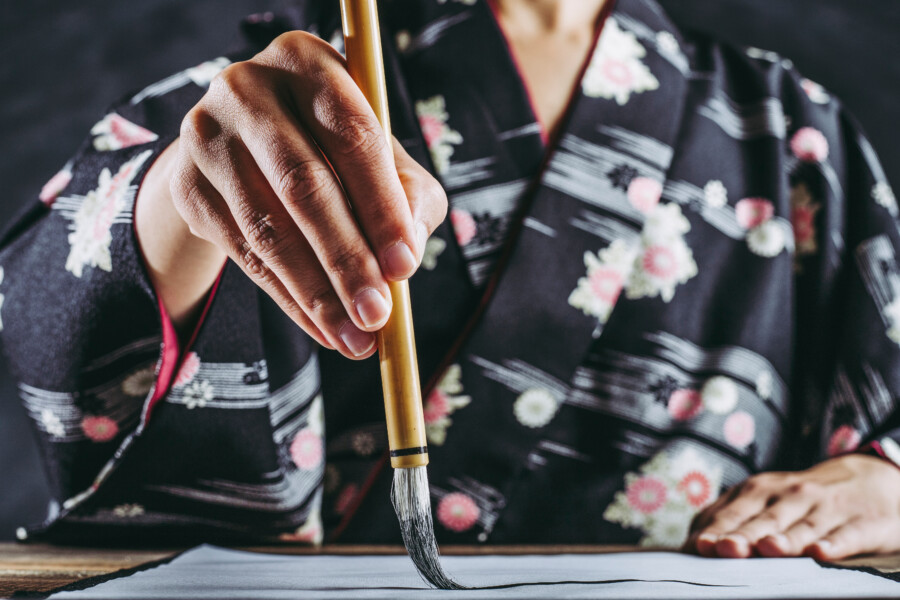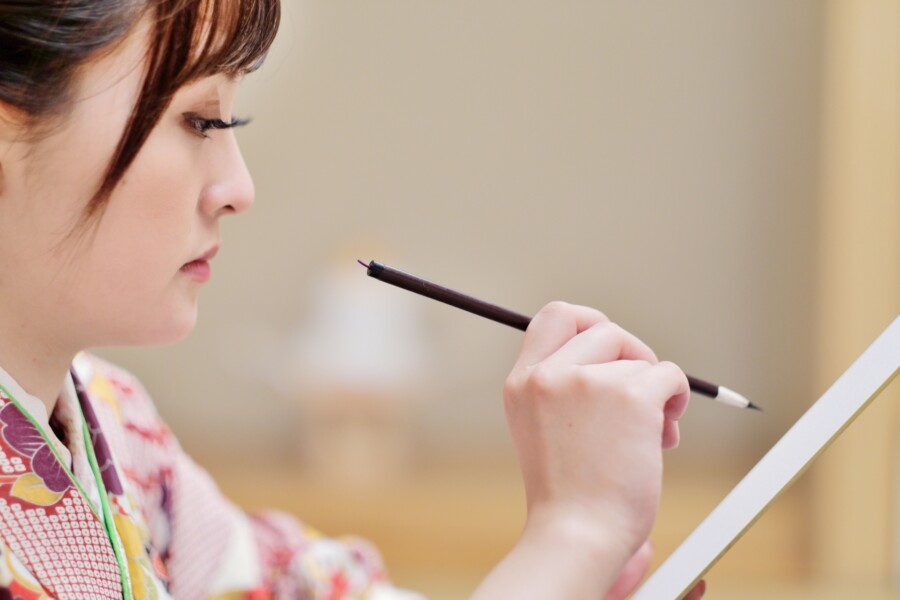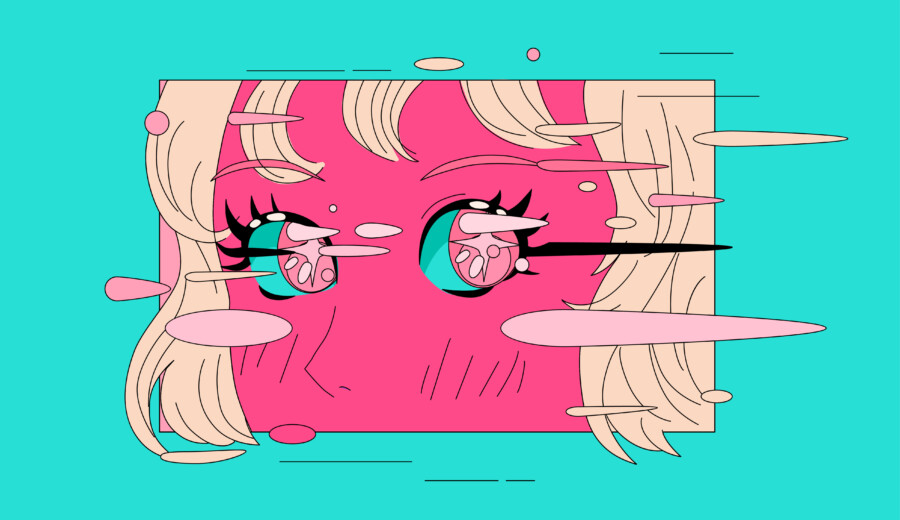
The Power of Japanese Language Design: Words that Drive Branding Success
While “design” is often associated with visual elements, words can also be powerful design tools. Japanese, in particular, possesses unique charm in its beauty, depth, and expressiveness. This article delves into the power of Japanese language design from a branding perspective.
Capturing the Beauty and Depth of Japanese in Design
Characteristics of Japanese Language Design
Japanese has three writing systems – kanji, hiragana, and katakana – each with unique aesthetic qualities that enrich design expression. For example, kanji conveys strength and dignity, suitable for expressing luxury and tradition. Hiragana gives a soft, gentle impression, ideal for expressing familiarity or femininity. Katakana has a sharp, modern feel, perfect for stylish or innovative concepts.
Japanese can also express subtle emotions and nuances through sentence-ending expressions. Variations like “desu,” “masu,” or “da” each create different impressions, effectively harnessing the power of words.
Expressive Power of Japanese in Design
Japanese excels in design due to its conciseness and intuitive comprehensibility. It plays a crucial role in designs where visuals and words combine to convey information, such as logo design, catchphrases, and packaging.
For instance, in logo design, the strength and beauty of Japanese characters can clearly express brand image. Catchphrases can effectively convey product appeal or brand messages in short, impactful Japanese. In packaging design, Japanese characters and typography can express product quality and values.
Evolution of Japanese Design in Modern Times
Recently, Japanese design has evolved by incorporating modern sensibilities while preserving traditional beauty. New typefaces and fonts have expanded design possibilities, while digital technology has made Japanese design more sophisticated and expressive.
Modern Japanese design fuses tradition and innovation to create more refined and attractive designs.
The Importance of Japanese in Branding
Building Brand Image
Japanese plays a crucial role in constructing brand image. Its unique beauty and depth can express a brand’s worldview and values. For example, a brand themed around “wa” (Japanese harmony) can strengthen its image using traditional typefaces or nature-inspired designs.
Brand image is formed by words that resonate with customers. Japanese can create such words with its delicate expressiveness.
Creating Empathy with Customers
Branding crucially involves creating empathy with customers. Japanese can bridge the gap with customers through its familiarity and relatable language. For example, using resonant words in product or service descriptions can deepen customer empathy.
The power of words is necessary to gain customer empathy. Japanese can create empathy and nurture brand attachment through its expressiveness.
Expressing Brand Story in Japanese
A brand story conveys a brand’s background, philosophy, and future vision. Japanese can compellingly communicate brand stories through its rich expressiveness. For example, it can create moving stories by carefully explaining the founder’s vision, the brand’s origins, and its future goals.
Brand stories are woven with words. Japanese can create brand stories that capture customers’ hearts with its expressive power.
Case Studies – Successful Examples of Japanese Language Design
Here are specific examples of how Japanese language design is utilized in branding:
Sophisticated Packaging Design with Japanese Aesthetics
The sake brand “獺祭 – Dassai” incorporates Japanese aesthetics in its packaging design to express the inherent elegance of sake. Traditional typography and simple design create a refined image that captures customers’ hearts.
Dassai pursues Japanese beauty not only in packaging design but also in naming and product concept. They’ve built a sophisticated brand image that fuses traditional culture with modern sensibilities.
Logo Design Using Traditional Typography
Many long-established ryokan (Japanese inns) and restaurants use logo designs with traditional typography. For example, the logo of Kyoto’s historic ryokan “俵屋 – Tawaraya” expresses the characters for “Tawaraya” in traditional typography, creating a dignified brand image that evokes history and tradition.
Traditional typography is suitable for expressing a brand’s history and tradition. It can strengthen brand image by giving customers a sense of security and trust.
Simple and Memorable Naming
Product and service naming greatly influences customer impressions. Japanese can create memorable names with its conciseness and beautiful sounds. For example, the cosmetics brand “資生堂 – Shiseido” has a simple yet memorable name that gives a sophisticated impression.
Naming is a core element of branding. Creating easy-to-remember and attractive names can increase interest and attention to the brand.
Frequently Asked Questions About Japanese Language Design
What should I be careful about in Japanese language design?
There are several points to consider in Japanese language design. First, it’s important to understand and appropriately use the images conveyed by kanji, hiragana, and katakana. For example, while kanji can express strength and luxury, some customers might find it old-fashioned. Hiragana can express familiarity and cuteness but might seem childish in some cases. Katakana can express stylishness but might sometimes give a hard impression.
Also, attention to character placement and balance is necessary in Japanese design. The overall impression of the design changes with character placement. Achieving a balanced layout can create visually beautiful, easy-to-read, and pleasant designs.
How can I learn Japanese language design?
There are various ways to learn Japanese language design. You can study at specialized design schools or universities, read design books and magazines, or explore design-related websites and blogs.
It’s important not only to learn design basics but also to understand the beauty and depth of Japanese. For example, attending calligraphy classes or experiencing traditional Japanese culture can refine your sensibility for Japanese language design.
The Future of Japanese Language Design
Japanese language design will continue to evolve with digital technology advancements. New designs utilizing VR and AR technologies, and AI-generated designs are areas of increasing focus.
Japanese language design continues to evolve while preserving traditional beauty. It will continue to play an important role in enriching our lives and culture.
Conclusion: Utilizing Japanese Language Design for Successful Branding
This article explained the power of Japanese language design from a branding perspective. Japanese can greatly contribute to building brand image, creating customer empathy, and expressing brand stories through its beauty, depth, and expressiveness.
Understanding and utilizing the power of Japanese language design can help create more attractive brands. Use this article as a reference to lead your brand to success.
We hope this article helps your branding strategy.
Native-Checked Japanese Copy Review












